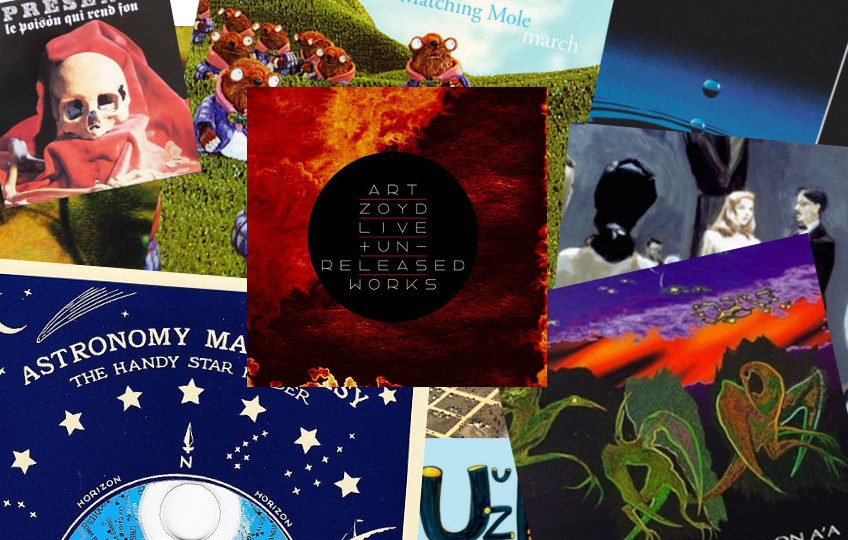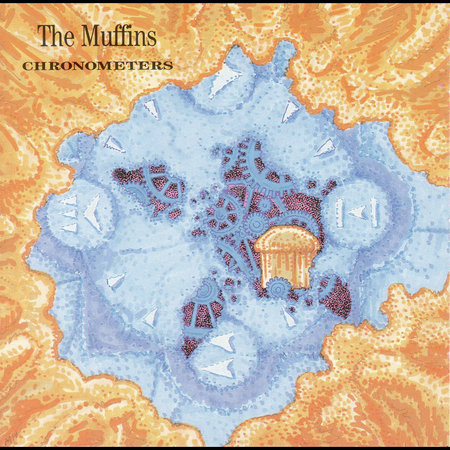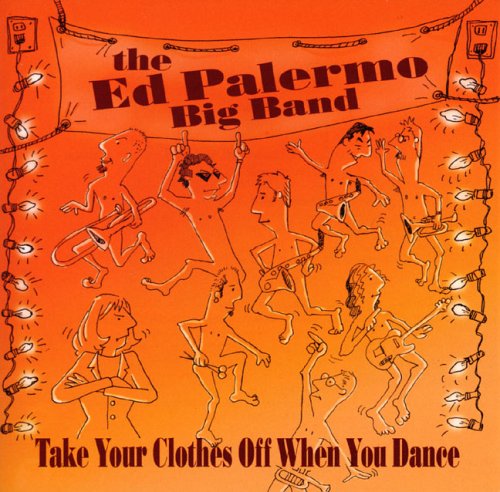
Exposé Online
What's old
Exposé print issues (1993-2011)
- 1 (October 1993)
- 2 (February 1994)
- 3 (May 1994)
- 4 (August 1994)
- 5 (October 1994)
- 6 (March 1995)
- 7 (July 1995)
- 8 (November 1995)
- 9 (March 1996)
- 10 (August 1996)
- 11 (February 1997)
- 12 (May 1997)
- 13 (October 1997)
- 14 (February 1998)
- 15 (July 1998)
- 16 (January 1999)
- 17 (April 1999)
- 18 (November 1999)
- 19 (May 2000)
- 20 (October 2000)
- 21 (March 2001)
- 22 (July 2001)
- 23 (December 2001)
- 24 (April 2002)
- 25 (September 2002)
- 26 (February 2003)
- 27 (August 2003)
- 28 (December 2003)
- 29 (April 2004)
- 30 (September 2004)
- 31 (March 2005)
- 32 (September 2005)
- 33 (May 2006)
- 34 (March 2007)
- 35 (January 2008)
- 36 (October 2008)
- 37 (July 2009)
- 38 (July 2010)
- 39 (Summer 2011)
Features
Decades of Amazing —
A Look at Cuneiform Records

On February 2, Cuneiform founder Steve Feigenbaum announced that the label was going on hiatus, with its future uncertain. There’s been a lot of discussion online (and no doubt in real life as well) about What It Means, so there’s no need for Exposé to chime in on that front. What we’d like to do instead is take the occasion to look back at just what Cuneiform has been since its inception, and what it has contributed to the musical landscape in terms of what we value here.
by Jon Davis, Peter Thelen, Pam Thompson, Mike Borella, Published 2018-02-08
Since its inception, the label has released about 500 albums (more if you count differing reissues and editions), many of which have been reviewed by our staff going back to our very first printed issue in 1993, where we covered Heldon and The Muffins.
Heldon — Electronique Guerilla / It's Always Rock 'n' Roll
 (Cuneiform 51/52, 1975/1992, 2CD)
(Cuneiform 51/52, 1975/1992, 2CD)
by Peter Thelen, Published 1993-10-01
The reissue of Heldon's first album is one that this writer has surely been anticipating for quite some time. What's even better is that Heldon's very elusive double third album has been combined with it to make this excellent 2CD set. For the uninitiated, Heldon's sound could be described as a mixture of superb Frippian guitar and harsh aggressive electronics, although there is no one formula used throughout, which gives these two albums such a unique character, alternating between styles within this electronic-industrial realm. Richard Pinhas pays regular homage to Fripp, without sounding particularly derivative of King Crimson — or anything else Fripp has done for that matter, as Heldon is infinitely more anarchic and hostile, yet at times the music lapses into an almost peaceful meditative mode. This is very unique music, and stands as strong today as it did when it was new.
The Muffins — Chronometers
 (Cuneiform 55007, 1975/1993, CD)
(Cuneiform 55007, 1975/1993, CD)
by Mike Borella, Published 1993-10-01
A strange release at first glance. One CD, 70 plus minutes, 21 tracks, one track is 23 minutes long. Hmmm. This is a compilation of outtakes and general weirdness from 1975. The Muffins are often referred to as the seminal American progressive band. They capture the RIO style of Henry Cow with all the complexity, and made it much more listenable. While not quite on par with their classic Manna / Mirage, Chronometers will round out your Muffins collection with their brand of prog-jazz. At times sounding like National Health, Henry Cow, and Picchio dal Pozzo's second LP, they play horn and flute oriented jazz, with an occasional dip into progressive rock. This stuff may not do much for the sympho listener and will probably do nothing for the neo-progger, but if you're into fusion in the least, go ahead and check 'em out. This release seems more thrown-together than Manna/Mirage and the composition doesn't seem as tight. For that reason, I'll put it a couple of notches below that album. But it is still excellent.
These releases are examples of two of Cuneiform’s focus areas: experimental electronic music and RIO / Canterbury music. Countless later releases would feature members of these groups, including Heldon leader Richard Pinhas and various projects involving The Muffins in different combinations, from Chainsaw Jazz (reviewed in #2) down to their last new album for the label, Double Negative (reviewed in #31), along with many releases of archival material such as Open City (reviewed in #4).
The Canterbury thread plays out by way of such key groups as Soft Machine, National Health, and Gilgamesh and many releases by former members of those bands, such as Phil Miller (All That was a roundtable review in #28) and Robert Wyatt.
Robert Wyatt — '68
 (Cuneiform Rune 375, 1968/2013, CD)
(Cuneiform Rune 375, 1968/2013, CD)
by Jon Davis, Published 2013-10-25
This is one of the most amazing archival releases of "lost" music ever presented, at least for Soft Machine fans. I always thought of the first two Softs albums as the first phase of the band, with their vocal tunes and psychedelic sound. I wasn't initially aware that the band actually broke up after their first US tour in support of Jimi Hendrix (which took place before the first album was even released). Before returning to England, facing a future without a band, Wyatt recorded a bunch of material, both newly composed and reworked from older material, some dating from many years previous. According to the wonderful liner notes, Wyatt then returned to England to find many people wanting more Soft Machine, so much of his demo material found its way into the new band's repertoire. In particular, the idea of long suites consisting of fragments of varying length finds its first expression in "Rivmic Melodies," presented here in different form than would later comprise side one of Volume Two, though with the same basic plan. The other long suite is "Moon in June," which wouldn't resurface until Third. Barring some parts later added by Hugh Hopper and Mike Ratledge in the second half of "Moon in June" — the demos were recorded with empty spots for their parts — Wyatt sings and plays all the instruments himself, mostly drums, piano, and organ. Brian Hopper's tune "Slow Walkin' Talk" features an appearance by Hendrix on bass. Among the many astounding factors of '68 is how thoroughly great it sounds, from the basic quality of the recording to the skill of Wyatt's performances. And the story told in the booklet is completely charming, as Wyatt is clearly amused by his inability to remember details from that long-ago time. This is 47 minutes of pure magic, and the world is a better place for having it available.
From here we can move into the jazzy side of Cuneiform, and a major part of that features European artists who recorded great innovative music that never got the attention it deserved, such as Gary Windo, Paul Dunmall (Great Divide reviewed in #22), Mike Osborne (Dawn reviewed in 2015), John Surman (Way Back When reviewed in #33), and Graham Collier.
Graham Collier — Hoarded Dreams
 (Cuneiform Rune 252, 1983/2007, CD)
(Cuneiform Rune 252, 1983/2007, CD)
by Jon Davis, Published 2008-01-01
On a purely practical level, this release is hard to categorize. It is the first wide appearance of a performance from the Bracknell Jazz Festival in 1983, so it is both a new release and an archival recording. Collier was commissioned to write an extended piece and allowed to pick any musicians he wanted, and the result was a 19-piece band that’s not much like a traditional jazz big band, though the music is undoubtedly jazz. Five winds (saxes, flutes, and clarinets of various sizes), five trumpet/flugelhorns, three trombones, a tuba, two guitars, piano, bass, and drums follow Collier’s direction through various sections of composition and improvisation. While some sections are very free, featuring improvisation of three or four players at once, there’s enough coherence to keep it from wandering off into chaotic self-indulgence. Given the fact that this was not a standing ensemble, but a collection of people brought together for one performance, the amount of cohesion is simply astounding, giving eloquent testament to the intuitive talents of all. I didn’t do an actual tally, but it seems that each player gets at least one spotlight moment. Collier’s writing is spot on at each turn, with contrasting sections, driving grooves, reflective interludes, tasty ensemble bits, and interesting combinations of elements. I hope all those in the audience were aware of what a special event they were part of, and while I don’t know what kept this one in the vaults for so long, I’m glad it’s out now.
Cuneiform’s other area of jazz puts a spotlight on creative American artists who don’t fit in with the more mainstream jazz labels. Here we find Thumbscrew (check out Thumbscrew and Convallaria), Rob Mazurek (on his own and in São Paulo Underground), Curtis Hasselbring (Number Stations reviewed in 2013), and many more. Ed Palermo’s Big Band is a good example:
The Ed Palermo Big Band — Take Your Clothes off When You Dance
 (Cuneiform Rune 225, 2006, CD)
(Cuneiform Rune 225, 2006, CD)
by Peter Thelen, Published 2007-03-01
Legend has it that Uncle Frank once said, “Never kiss a toad from the short forest after it’s been sleeping in a jar with a rutabaga.” Well, that may or may not be true, but what is absolutely certain is that the Ed Palermo Big Band have invoked the spirit of Hot Rats, and respectfully applied it to nine more of the master’s finest compositions. This is an amazing ensemble, bright, brassy, and tight, who take their work seriously and have a helluva lotta fun doing it. We’re not just talking a Zappa cover band here; Palermo is a masterful arranger who has made reworking Zappa’s compositions his life’s endeavor for over a decade now. Let’s count ‘em up: drums, guitar, bass, piano, keyboards, three trombones, two trumpets, and a six piece sax / clarinet / flute section, plus a couple special guests comprise this very impressive group. Note the lack of extensive mallet percussion, violin, and two goofy jokers who used to sing in a famous pop band. Therein lie some of the differences with the original Zappa arrangement model; in fact Palermo sticks pretty close to a standard jazz big-band approach. It’s all instrumental with the sole exception of one cut (“Mom and Dad / Oh No”) where guitarist Carl Restivo does his part. So what other material have they tackled? “Sleep Dirt,” “Pound for a Brown on the Bus,” “Moggio,” “RDNZL,” “Dwarf Nebula,” “Gumbo Variations,” and of course, the title track. Exceptional!
Taking a step back to the Canterbury and RIO areas, there’s a lot more to explore from Cuneiform. The label has been home to releases by several of the world’s major players in the genre, including Univers Zero (we've reviewed at least four of the Cuneiform releases), Present (a roundtable of Live! in #11, plus several others), Miriodor (a roundtable of Jongleries Élastiques in #9 through to Signal 9 in 2017), 5uu’s (roundtable of Hunger's Teeth in #4), Thinking Plague (roundtable of In Extremis in #16 plus many more), Birdsongs of the Mesozoic (roundtable of Dancing on A'a in #7), and many more from a variety of countries.
Volapük — Le Feu du Tigre (Tiger Fire)
 (Cuneiform Rune 74, 1995, CD)
(Cuneiform Rune 74, 1995, CD)
by Peter Thelen, Published 1996-03-01
Guigou Chenevier was the drummer and a founding member of that wild and crazy French trio Etron Fou Leloublan, who released six albums between '76 and '86. Volapük is his latest band, a trio of drums, cello, and bass clarinet. What kind of music could such an unusual lineup produce? No guitars, no bass, no keyboards per se... indeed this is very unique music, clearly not of a rock nature, and like a lot of stuff on the Cuneiform label, this one is gonna be a challenge to describe! The cello and bass clarinet trade off providing the melodic content, while the other works with the rhythm section – providing a surprisingly formidable bottom end. Chenevier adds some vocals on one track, but essentially this is purely instrumental. The primary influence herein is 20th Century neo-classical, with elements of French folk and North African traditional music, and a healthy dose of avant-gardism. RIO? I dunno, maybe. Imagine Art Zoyd with a drummer, and that will put you close to the mark on some of the tunes; others are rhythmically abstract, dissonant, and tense. Yet all the fifteen pieces here are energetic and fairly accessible once given a chance. This is one of those challenging albums that takes a few listens (OK, maybe a few more than a few) to get to know, but is very satisfying once you get there and get comfortable with it.
But Cuneiform has never been constrained in any way, and has also released a lot of albums that don’t fit in with any of the previously mentioned categories. The one common element is unfettered creativity, and you’ll find it in albums by Djam Karet (the review of Recollection Harvest in #33 is one of many), Ahleuchastas (Even in the Midst, reviewed in #36 for example), Cheer-Accident (No Ifs, Ands or Dogs is one), Mats/Morgan (including their most recent as of this writing, [schack tati]), and...
Alec K Redfearn and the Eyesores — The Blind Spot
 (Cuneiform Rune 244, 2007, CD)
(Cuneiform Rune 244, 2007, CD)
by Pam Thompson, Published 2008-01-01
This album can’t be called dull — it’s intriguing, unpredictable, quirky, sometimes disturbing, and masterful. It starts with industrial sounds reminiscent of walking up stairs, moving into almost childlike vocals that are vaguely whimsical. As the CD continues, songs ebb and flow, starting with a base, adding voices and instruments in layers to an eventual resolution. There’s a simplicity here combined with a subtle complexity that works. The blend of instruments is distinctive, with moving lines against droney chords, building light and delicate musical layers one atop another, leading to endings that evolve into the next track. The drumming is light and tasty, precision oriented. Mild dissonances, harmonies, descants, rhythms all combine to completion in subtle ways that are aurally satisfying. The music is adventurous in a dark, muted way, at times dreamlike, at times nightmarish, and I kept finding myself fascinated with the vocal juxtapositions. The production is superb, with a very clean sound that showcases the voices and instruments in turn. The variety of musical influences on this CD is vast; Alec K. Redfearn has taken a plethora of musical styles (folk, cabaret, classical, circus, and Gypsy to name a few) and combined them into something that works on multiple levels. Parts meld and metamorphose, and just when it seems you can put a name to a passage or groove the music goes in a new direction, blending styles and genres with abandon. Redfearn does all of the writing for the group, which consists at various points of 15 musicians. Their unique sound is accomplished by using a wide range of instruments — glockenspiel, violin, bassoon, contrabass, accordion, hurdy-gurdy, alto sax, F horn, jawharp, guitars, bass, drums and keyboards, as well as two custom instruments: the drone hurdy-gurdy and the gong drum, the latter of which was inspired by part of Hieronymous Bosch’s painting “Garden of Earthly Delights.” There is so much going on here, but it never seems overdone or overproduced, and the end result is musical elegance. This is an amazing album.
"Amazing" is a word that comes up a lot when looking through the Cuneiform catalog. In a world where there is more music than anyone has time to listen to, having a reliable curator is essential, and Steve Feigenbaum has been one of the best. In your search for new sounds, you could reliably move anything with the Rune imprint to the top of the list. Whatever the future holds for this bastion of creative nonconformity, its accomplishments are significant. We can hope for the best, that some kind of continuation of the good work can go on in this uncertain world where art is so precarious yet still has the power to brighten our lives.
And we haven't even mentioned the massive new Art Zoyd box set...
If you're new to all of this, be sure to investigate the label's Bandcamp page (linked below). Many releases can be sampled there and purchased in digital or physical form.
Filed under: Profiles
Related artist(s): Ahleuchatistas, Birdsongs of the Mesozoic, Graham Collier, Hugh Hopper, The Muffins, The Ed Palermo Big Band, Alec K. Redfearn / The Eyesores, Soft Machine, Univers Zéro, Robert Wyatt, 5uu's, Cheer-Accident, Djam Karet, Phil Miller, Richard Pinhas, Present, Thinking Plague, Heldon, Patrick Gauthier, Coco Roussel, Rob Mazurek, Art Zoyd, Gilgamesh, National Health, Curtis Hasselbring (Curha), Miriodor, Thumbscrew, Mats / Morgan Band, Mike Osborne, Gary Windo, Paul Dunmall, Volapük, Dave Newhouse (Manna / Mirage), Chainsaw Jazz, Paul Sears, Shane Parish (Perlowin), Tomas Fujiwara
More info
http://cuneiformrecords.bandcamp.com
http://expose.org/index.php/labels/display/30.html
http://cuneiformrecord.blogspot.com
What's new
These are the most recent changes made to artists, releases, and articles.
- Review: Olly Chalk - In Those Remote Stars
Published 2026-01-17 - Review: Jeff Pearce - Infinite Ambient: Winter Landscapes
Published 2026-01-16 - Release: Nektar - Mission to Mars
Updated 2026-01-15 11:59:57 - Release: Mordecai Smyth - Gather the Scattered Mind
Updated 2026-01-15 11:52:38 - Review: Trio of Bloom - Trio of Bloom
Published 2026-01-15 - Review: Barry Cleveland & Robert Rich - Elliptical Passage
Published 2026-01-14 - Release: Orchestra of the Upper Atmosphere - θ2
Updated 2026-01-13 23:09:38 - Release: Orchestra of the Upper Atmosphere - θ3
Updated 2026-01-13 23:07:05 - Release: Orchestra of the Upper Atmosphere - θ6
Updated 2026-01-13 22:55:18 - Release: Orchestra of the Upper Atmosphere - θ5
Updated 2026-01-13 22:52:03 - Release: Orchestra of the Upper Atmosphere - θ4
Updated 2026-01-13 22:47:05 - Release: Barry Schrader - Ambient : Aether
Updated 2026-01-13 22:29:29 - Review: Trinary System - The Hard Machine
Published 2026-01-13 - Release: Camahueto - Reflejos
Updated 2026-01-12 23:44:45 - Artist: Camahueto
Updated 2026-01-12 23:41:18 - Release: Danza de la Ira - Septies Kairos
Updated 2026-01-12 23:03:00 - Artist: Danza de la Ira
Updated 2026-01-12 22:56:20 - Release: Orchestra of the Upper Atmosphere - Orchestra of the Upper Atmosphere
Updated 2026-01-12 16:14:44 - Release: Orchestra of the Upper Atmosphere - θ7
Updated 2026-01-12 16:13:34 - Artist: Orchestra of the Upper Atmosphere
Updated 2026-01-12 16:12:18
